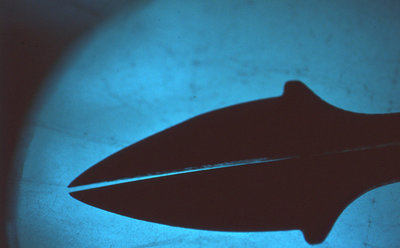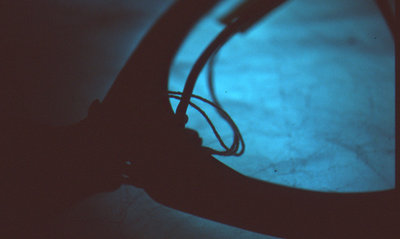“From the earliest times, human civilization has been no more than a strange luminescence growing more intense by the hour, of which no one can say when it will begin to wane and when it will fade away.”
Archives of Joseph Lister
The archives of Joseph Lister are held in the Wellcome Library, beautifully folded, stored and wrapped in ribbon.
They give an insight into who Joseph was; a man who bought a lot of biscuits, gave money to the poor, sometimes forgot to take his library books back, moaned to his sister Mary about not having time to write.
His personal and surgical notebooks chart the development of his theories on bacterial infection and the use of carbolic acid as an antiseptic agent. There are records of pivotal discoveries, connections and communication with Louis Pasteur, but there are also records of the mistakes, the scorings out - ‘the carbolic acid was too strong’ , ‘it didn’t work’
We used the bacterial light to illuminate Joseph Lister and in doing so felt we brought him out of the archive and back to life for just a short time.
This was made possible with the help of Rowan De Saulles, and the archivists at the Wellcome library. Thanks also to photographer Vaughan Forbes for all his help and advice.
Box 7, Old Operating Theatre, London
The photographs below were all created using a bacterial light source. They are part of the medical contents of ‘Box7’, a box kept out of sight containing objects deemed unsuitable for showing or handling at the Old Operating Theatre in London.
Part of St Thomas Hospital, built in the roof space of St Thomas Church around 1822, the Operating Theatre was originally used to operate on the women patients from Dorcas ward. The majority of cases were for amputations or superficial complaints as, without antiseptic conditions, bacterial infections ruled out internal operations.
With thanks to Karen Howell, the Curator.
box 7
Spanish matchbox collection 1977.
Cause of death - lung cancer.
Spanish matchbox collection 1977
'Box7' collection contents. Misfits and unsuitable handling items from the Old Operating Theatre, London Bridge.
Old Operating Theatre ‘Box 7’
Bleeding bowl. Downloaded from ebay March 2009.
Simon’s mug University of Surrey. Last used Feb 07.
Simon’s mug with bacterial addition March 2009
'The apparition of these faces in the crowd:
Petals on a wet, black, bough’
Ezra Pound (1885 - 1972)
Professors Portraits taken in photo booth in a cupboard as part of the exhibition ‘Crossing Over’ at the Royal Institution.
Sketch of ‘Photograph booth’ lit by 10litres of Photobacterium phosphoreum
Harvard bridge measures 364.4 smoots and 1 ear
A major influence on my work, including ‘Exploring the Invisible’ has been ‘Smoot’s Ear - the measure of humanity’ by Robert Tavernor, Professor of architecture and urban design and director of the Cities programe, London School of Economics.
In his book Tavernor urges us to look beyond the notion that measuring is strictly a scientific activity, divorced from human concerns. Instead, he sets measures and measuring in cultural context and shows how deeply they are connected to human experience and history.
Is the measurement of the importance of the bioluminescent bacteria only seen in quantifiable medical advancements, or is there also an important value in engaging with the bacterial light out side of a less scientific context?

















